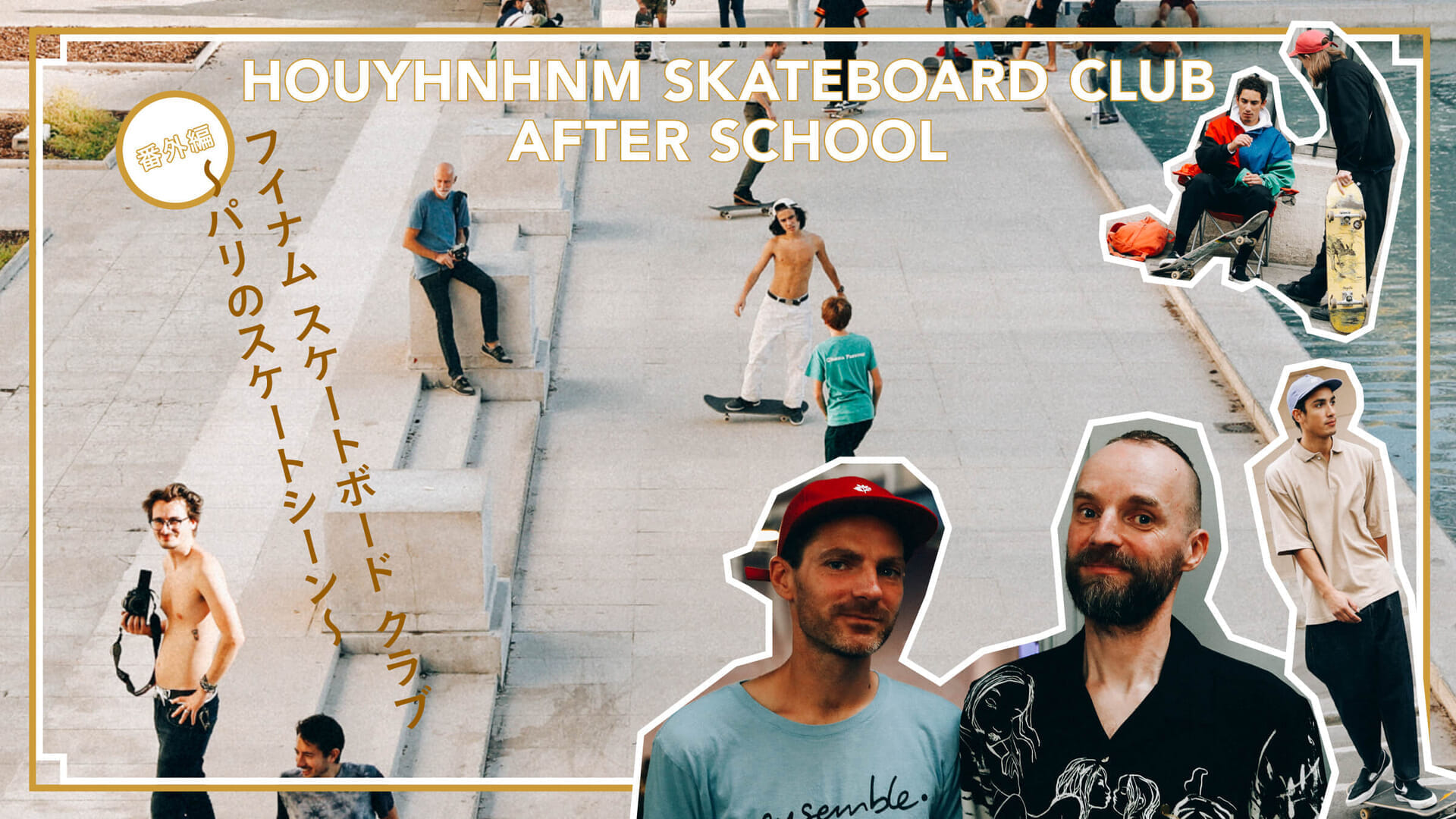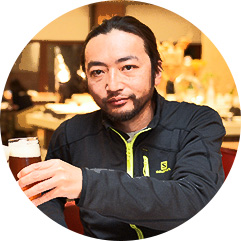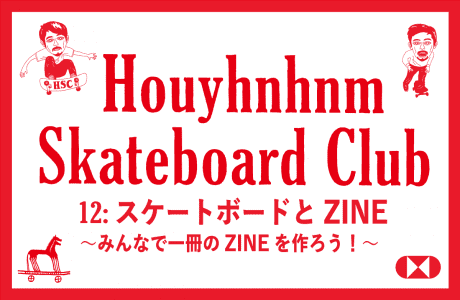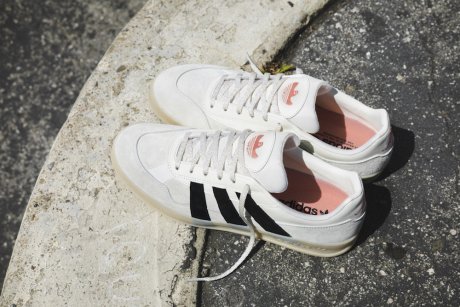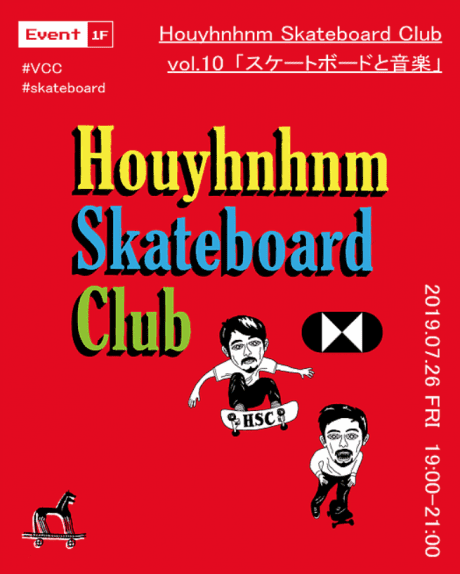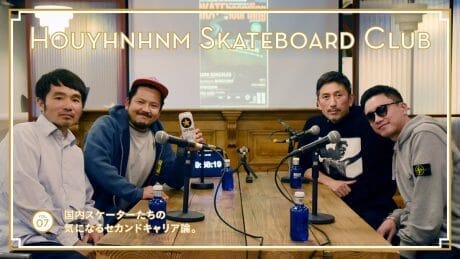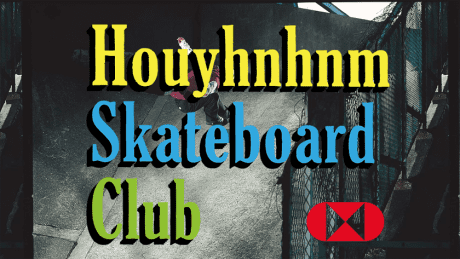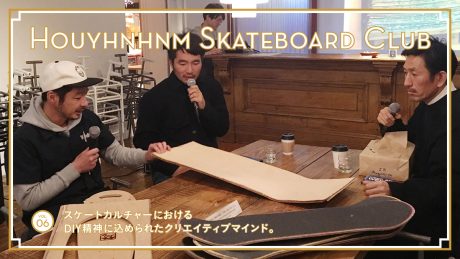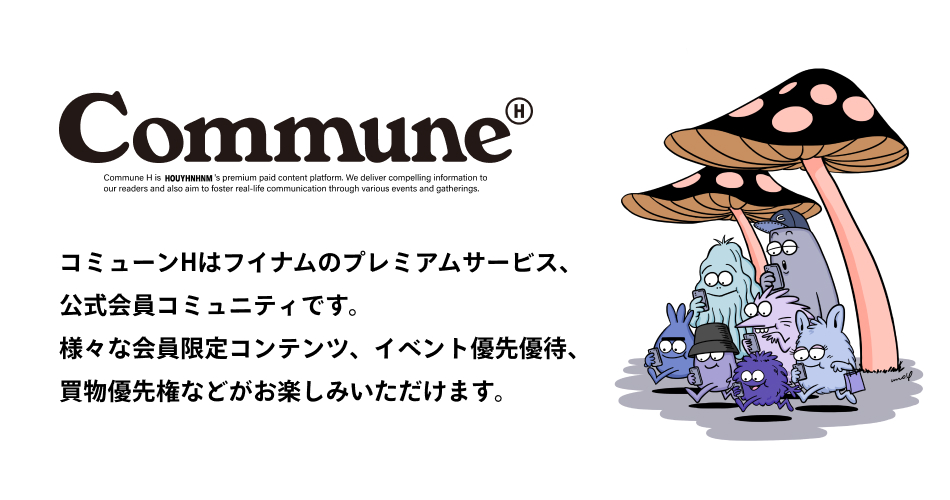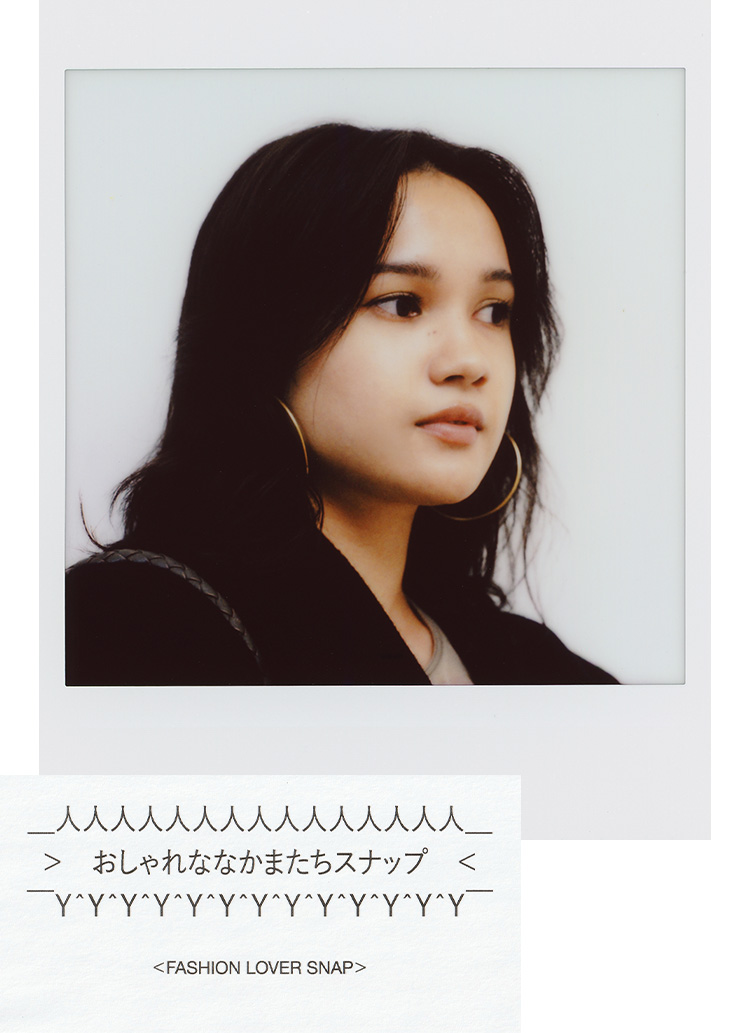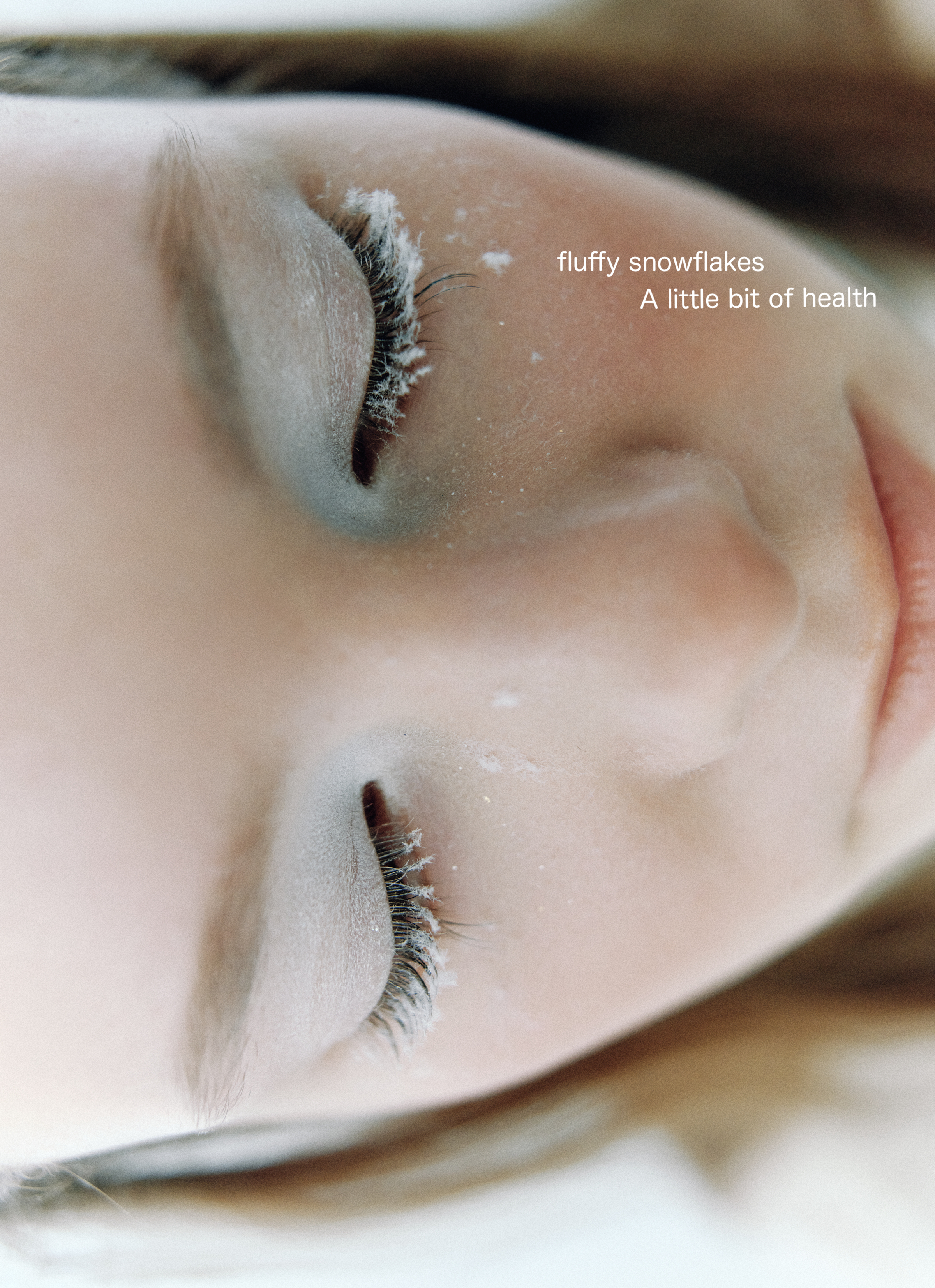01. Similar to Japan? Skating in Paris, France .

TAVU is an old friend of Banjaman's who is emerging as an artist.
First of all, there's this guy. Banjaman , the O.G. of the Paris skate scene.
Skateboarding will become an official sport at the Tokyo Olympics. Japanese skaters may suddenly be on the podium in both the men's and women's competitions. As if in proportion to such a tailwind, the scene is being revitalized and is becoming bigger and bigger. The middle-aged and older generation, who can't ride the wave and can't afford to be a know-it-all. The middle-aged and older generation who have unforgettable skating memories in their hearts, but are still unable to get involved in a positive way. For those people, let's review the core of skating together and welcome the 2020 Olympic year! . This was the "HOUYHNHNM's Skateboard Club" that started in 2018.
So, the skate scenes in France and Japan have not been as far apart as their geographical distance since sometime in the 90's. . . Not only in terms of skills and techniques, but also in terms of the concentration of skate culture. . For example, Takahiro Morita of HOUYHNHNM's and LIBE, who appeared as an instructor at HOUYHNHNM's Skateboard Club. His videos and presence are widely known in Paris. As for deck brands, Junnosuke Yonesaka was once hooked up with Creeche, and Rui Araki's guest board was released by Magenta. Others are Hiroki Muraoka, Kota Ikeda, Ryo Sejiri, and Shogo Zama ....... Parisian skaters know Japanese skaters well.
Especially, Rui Araki is popular locally for his quick and nimble style and skating. It is no wonder that Rui Araki's skating style blends well with Paris, which is mainly known for its pleasant surfaces and tight streets, rather than the number of harsh handrails where hammer skaters are on the rise. . Besides, he is also an energetic photographer. With a vibe that makes everyone want to tinker with a manual camera, Parisian skaters are also interested in the photos he takes. Anyway, what I'm trying to say is that there is a lot of synchronization between French and Japanese skateboarding. . And Parisians know a lot about the Japanese scene. . In terms of fashion, France is a major fashion house nation. . However, the street level skating and culture is close to that of Japan. So, let me introduce an indispensable person for this report on the skating situation in Paris.
Banjaman is the editor-in-chief of the Paris-based skate media "LIVE SKATEBOARD MEDIA" and a photographer. He started this media company with the now defunct French skate magazine "SUGAR". Banjaman started his career as a photographer there, and then went independent to publish PAUSE, a culture magazine that mixes skating and lifestyle. Some may recall the distinctive logo drawn by Thomas Campbell.
He has been documenting the skate scene in France and Paris since the early 90's. He is a leading figure in the skate scene in France, and Paris in particular, and is known by many Parisian skaters as "OG" (OG is the word for "pie-in-the-sky"!) just by skating around town. Parisian skaters greet me with an "OG! OG (OG!)" as he skates through the streets of Paris. On the walls of bars, cafes, and bookstores, not to mention the stores where skaters gather, are large-format photos of kamiyaki taken and printed by Banjaman. When I come across such scenes, I am reminded of the tight-knit nature of the skater community.
. And I am reminded that every country's skate scene has key figures who are legendary or becoming legendary. On a street corner in Paris, far from Tokyo, I suddenly remembered the late Devil Nishioka and T19's Mr. Otaki . Banjaman was the opposite of Devil Nishioka, a mild-mannered philosopher, but I felt the same intensity in his obsession with skating and photography.
Such is the case with Banjaman, who says that there is a crew that he is looking at as a new skate media in Paris. It is another great thing about BANJAMAN PIESEN that he appreciates new talents and enthusiasm in an interesting and justified way. The crew is a three-person group called MECCA. They met by chance at a spot in Paris. As they became friends, Banjaman realized that they shared another common passion: skating.
. that is, painting. With a colorful palette, he works on various projects (jobs), including graphic design, murals, tattoos, and illustrations. One of the most notable projects is the new skate magazine Déjà Vu. Distributed free of charge in skate stores throughout France, Banjaman praises the magazine as being very well produced, clean, and fun.
In this era, led by the United States, the value of online news and online media is increasing, and most of the skate indusrties are prioritizing digital efficiency. In such a current trend, young Parisian skaters in their 20s dare to create a paper magazine. In this style, Banjaman must have felt the chic part of skateboarding, which is created on the street (they think up how to skate and play by themselves).
When I saw Banjaman talking with Cesar, one of the MECCAs, about photography, I thought there was no difference in the passion of the two skaters, who are two years apart in age, as much as in age.



Cesar of the MECCA crew and their skate magazine Déjà Vu.


